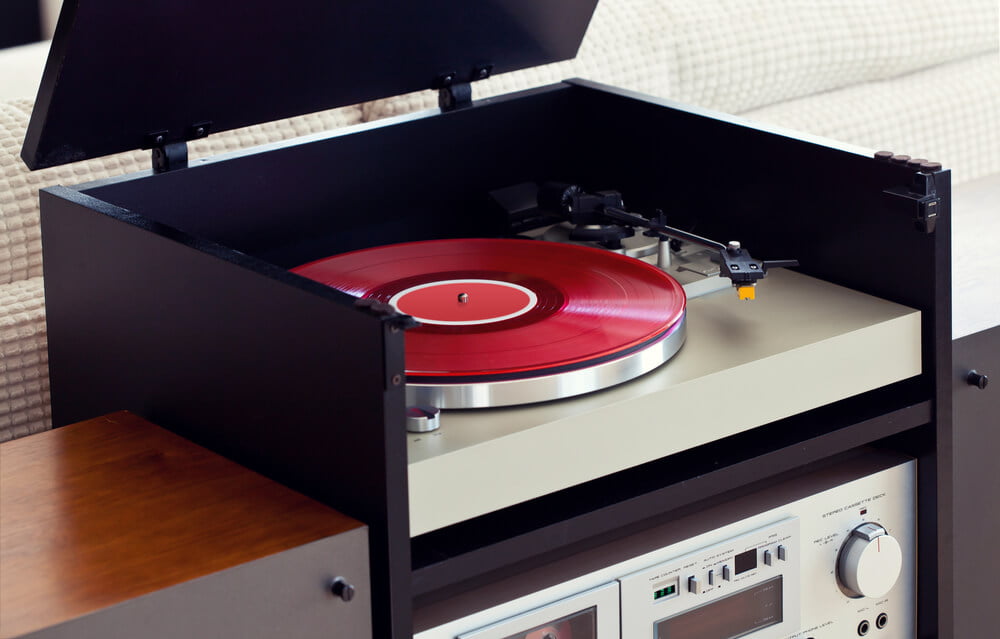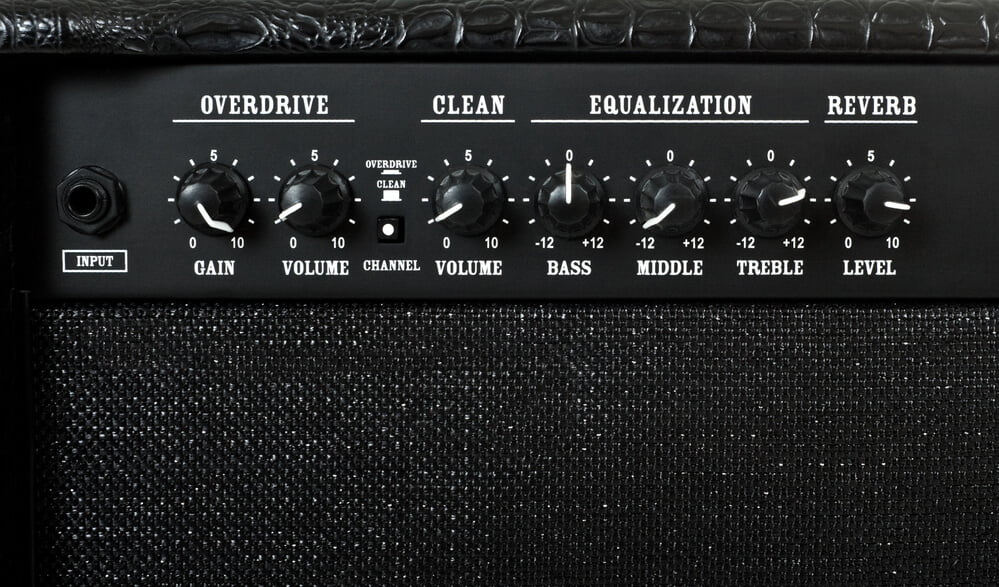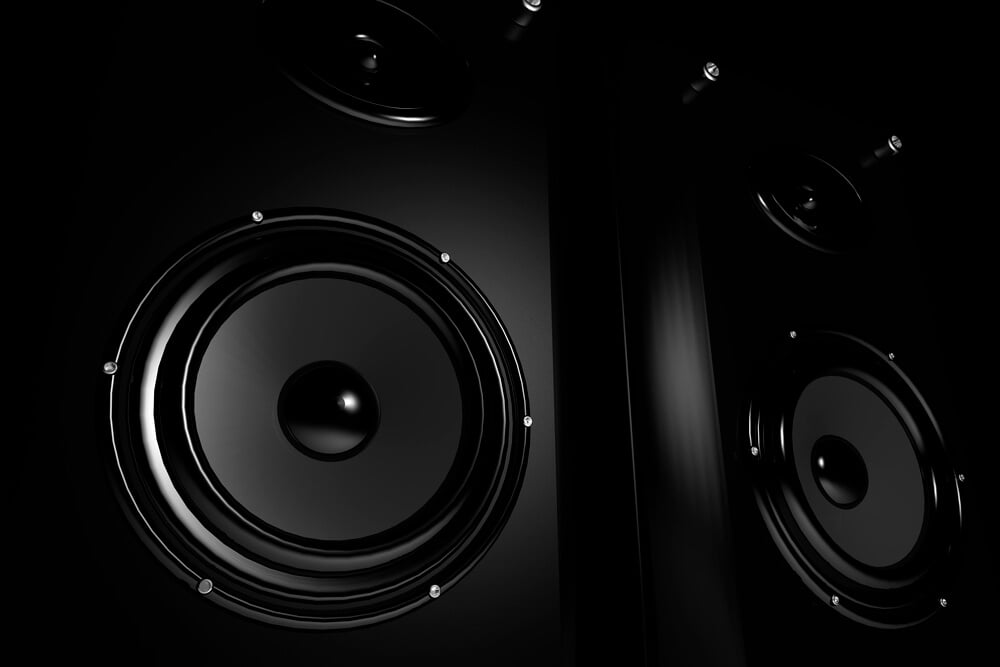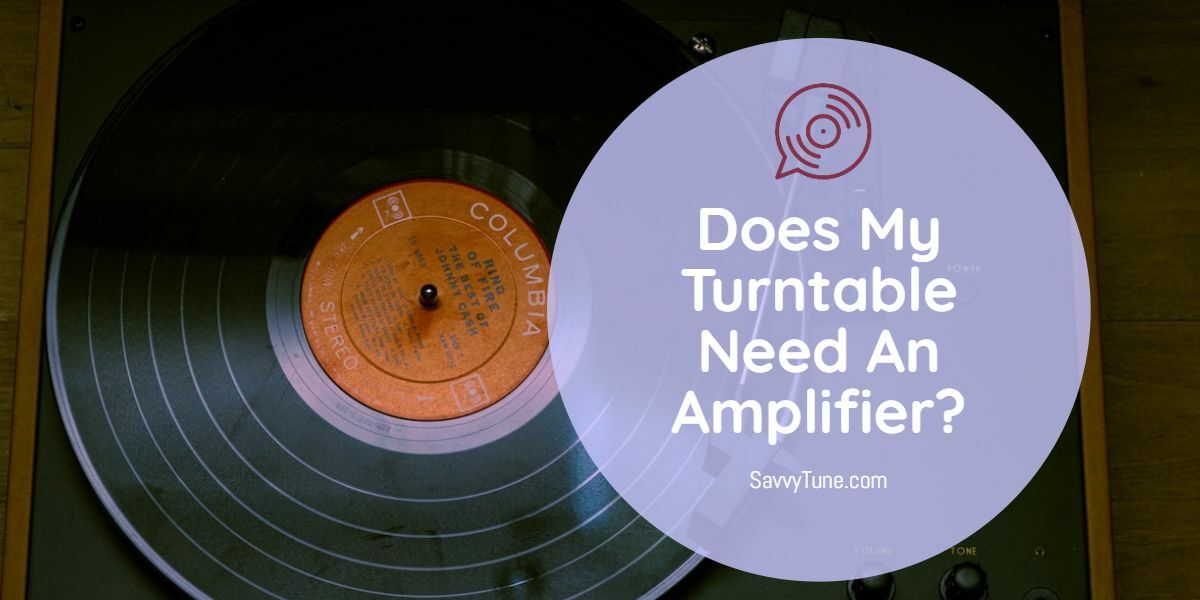Setting up the ideal turntable system for your record playing needs and budget is a tricky business. A lot of components’ names and features get thrown at you, often to a point where things get too overwhelming.
I’ve been in your shoes, so I understand the struggle. I also know I’d have appreciated someone giving me answers, so I’m doing it for you!
After today’s article, you’ll no longer wonder “do I need an amplifier for my turntable?”.
I’ll be sharing a detailed guide to the key components of a turntable system as well as the types of amplifiers and the features you need to consider before buying one.
Is an Amplifier Necessary for My Turntable?
In any turntable setup, an amplifier is an indispensable component. This device is essential as it increases the power of the output audio signals produced by the turntable and the preamp, making it strong enough to drive the speakers.
Without an amplifier -either standalone or in active speakers-, the signal would be too weak to translate into loud sound from the speakers.

Why Do I Need an Amplifier for My Turntable?
An amplifier is an electrical device that provides additional strength to an output signal by increasing current and voltage.
In a turntable setup -or any audio equipment that features wireless broadcasting and communication-, the job of an amplifier is to boost the output audio signal.
So, it becomes significant enough to be picked up and expressed properly by the speakers.
How Does a Signal Work?
To help you better understand the role of an amplifier device, let’s take a look at how a signal works in a turntable.
Do you know what the components of a standard stereo setup are? If you don’t, they include the following:
- A turntable
- A preamp
- An amplifier
- Speakers
So how do these elements form and produce a sound? This happens via audio signals known as Phono and Line signals.
First, your turntable generates a Phono output signal then the preamp creates a Line output signal.
The Phono and Line signals measure at no more than 3 to 10 mV (millivolt). This signal is too weak to drive speakers and produce sound.
Enter the amplifier.
The amplifier will receive this underpowered signal and amplify it to a range between 10 and 30 volts. As a result, a power-amplified signal reaches the speakers and a loud sound is emitted.
Analyzing this information, we can say that speakers need an audio signal that’s several thousands of times more powerful than the signal outputted from the turntable and several hundreds of times greater than what a preamp (or turntable with built-in preamp) pumps out.
Without an amplifier, or amp for short, the signal from the turntable and preamp is simply not sufficient to output much sound via the speaker.
Amplifier vs Integrated Amplifier

Now that you know what an amplifier is and why it’s so crucial in your turntable setup, you should be familiar with its types.
Generally, this device comes in 2 versions for turntables: power/stereo amplifiers and integrated amplifiers.
Integrated amplifiers feature a built-in preamp whereas power or stereo amplifiers don’t have a preamp built in.
Nowadays, the majority of turntable models are equipped with a preamp to equalize and slightly strengthen the cartridge signal. In this case, you don’t need to connect an integrated amplifier to your turntable.
Amplifier vs Receiver
You may come across the term “receiver” when researching amplifiers. Oftentimes, people use “receiver” and “amplifier” interchangeably in talks about hi-fi systems.
Does this mean they’re the same thing? Well, not quite.
Back in the day, a receiver referred to a stereo amplifier device that featured two channels as well and had a radio tuner built-in.
Currently, a receiver is more associated with AV (audio/video) receivers that include multiple input and output channels for sound and visual entertainment systems.
On the other hand, an amplifier nowadays is more linked to basic two-channel stereo amplifiers.
Must read: Why Is My Turntable Playing Too Slow?
What Else Does Your Turntable Need?
In addition to an amplifier, your turntable setup has to also include a preamp and speakers.
The Preamp
I’ve mentioned the preamp a few times earlier in this article, so let’s discuss its role.
In a stereo setup that uses a turntable, the presence of a preamp is a must for the following reasons:
1. The preamp corrects the signal
The first mission of a preamp in a turntable setup is to correct the signal picked up by the turntable from the record. Or rather correct the signal’s tone to make the music sound right.
You see, during the manufacturing process of a record, it gets carved to contain fewer wide grooves that correspond to lower tones and take up more physical room on the record.
Featuring fewer wide grooves means saving space on the record to add more than a single song on each side of the record.
However, this results in the higher tones or the treble of the music being considerably increased, whereas the lower tones or the bass of the music is considerably decreased.
Preamps serve to bring back the balance between the treble and the bass, effectively equalizing and correcting the music’s tone.
2. The preamp boosts the signal
The second purpose of a preamp in a turntable setup is to pick up the Phono signal that the turntable outputs (after detection from the record) and then turn it into a Line signal.
A Line signal is the standard level of power for an audio signal that’s outputted by a music-playing device and can be inputted into an amplifier or active speaker. Sometimes, a Line signal is referred to as an AUX signal.
You can preamps as standalone units or they can be built into turntables or amplifiers (integrated amplifiers).
If your turntable is equipped with a built-in preamp, the signal outputted by the turntable will directly be a Line output. Such turntable models usually feature a switch that allows you to change the level of the output audio signal from Phono to Line and the other way around.
User also read: Crosley Cruiser Vs. Voyager: Which Is Better?
Speakers
Another key ingredient in any turntable setup is speakers.
Without speakers, you won’t be able to hear the final output of the audio signal produced by your turntable then created and boosted by the preamp and amplifier.
There are 2 main types of speakers you can connect to your turntable system as follows:
Active or Powered Speakers

Active speakers, also referred to as powered speakers, are speakers that feature an amplifier built into their construction. This is a widely popular solution for audiophiles trying to put together a vinyl stereo system on a more modest budget.
If you use active speakers, you don’t need to buy a standalone amplifier since they already do both jobs.
Keep in mind that even if you choose to go with active speakers, you still need to hook it up to a turntable with a built-in preamp or a standalone preamp if your turntable doesn’t come with an integrated preamp.
This is because the vast majority of active speakers don’t contain a built-in preamp. However, more and more companies are getting into manufacturing these.
Active speakers feature RCA Phono input connectors and connect to power.
Passive Speakers
As for passive speakers, they don’t include a built-in amplifier. While they’re the more expensive option because you’ll need to buy a standalone amplifier as well, standalone gear offers the best sound quality.
Passive speakers feature cable terminal inputs only and don’t connect to power.
What to Look For in a Turntable Amplifier
Now that you know the importance of an amplifier in a turntable setup, you should know what to look for when buying one.
You’ll need to take into account various features and specs such as the power output, the number of channels, the frequency response, and the impedance.
Below is a simple guide to help you choose the right amplifier:
Power Output
First things first, you need to check the power output of the amplifier. This is the best way you can get an idea about its performance.
The power rating of an amplifier is measured in a unit known as RMS, short for Root Mean Square. It’s the average amount of power an amplifier can produce without getting damaged.
Generally speaking, you want an amplifier with an RMS greater than the overall power output of your turntable system.
Number of Channels
Next, you should think about the number of channels you want the amplifier to include. The more channels that an amplifier features, the more speakers it can connect to at the same time.
Frequency Response
The frequency response of your amplifier represents the range of frequencies or musical tones it can reproduce. The wider the frequency range of the amplifier, the more flexible and accurate it is in detecting and reproducing music.
For example, an amplifier with a frequency response ranging between 20 Hz to 30 kHz offers a more accurate reproduction of sounds than an amplifier with a 20 Hz to 20 kHz frequency response range.
Impedance
Last but not least, you should consider the impedance value of the amplifier. Your goal is to match the impedance of the amplifier with the impedance of your turntable system.
If this doesn’t happen and you choose an amplifier with a higher impedance than your speaker, the power reaching the speakers will be higher than they’re designed to deal with. This can result in overloading the setup and damaging the amplifier.
On the other hand, if the amplifier has a lower impedance than your speaker, the power reaching the speaker will be too low to drive it.

